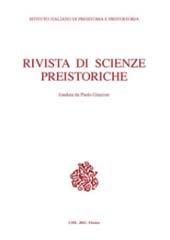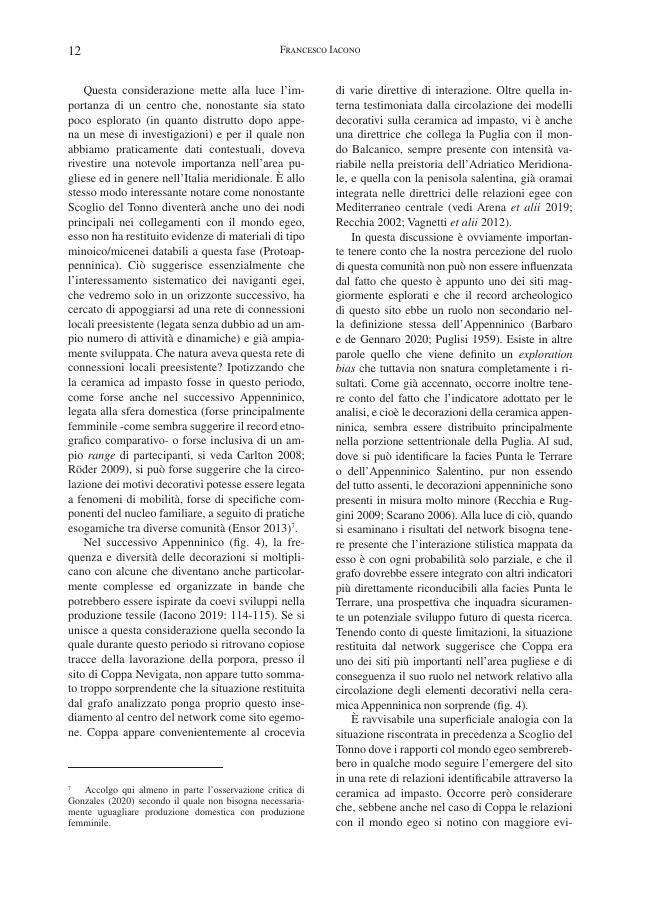Social networks e protostoria dell'Adriatico : presupposti teorico-metodologici, applicazioni attuali e future direzioni della ricerca
P. 1-22
Mobility and interaction have attracted the much interest during the last decade. One of the concepts that best represents such an interest and on which there has been relatively little attention within the context of Italian pre-protohistory, is that of networks, the field derived from the branch of mathematics called graph-theory and that can be effectively used to explore trends recognizable in the archaeological record that would not be identifiable through the analysis of individual case-studies and their diachronic distribution. Networks are the main topic of this article that has three main objectives: the first one is to provide a historical and updated picture of networks as a set of ideas and methods from the earliest approaches, to the most recent developments, highlighting how these have changed through time.
The second is to showcase how we can combine network approaches with other theoretical perspectives so to enhance the social insights that we can draw from the interpretation of archaeological networks. Such aim will be accomplished through the analysis of a specific case-study related to the Bronze Age of Apulia. Four different networks are constructed on the basis of the sharing of similar stylistic features in local pottery handmade pottery of different type (standard Impasto production and Southern Italian Protogeometric pottery, a local class of painted dark-on-light fine ware) through different time-slices covering much of the second millennium BC. The results of such analysis help us to reconstruct the development of the connections between sites as well as to hypothesize their relative importance through time.
In combination with trends highlighted in production studies, the networks also show the changing nature of pottery and a gradual shift from domestic to specialised production. Finally, some possible future directions for the use of network methodologies in archaeology are also briefly addressed. [Publisher's text]
Fa parte di
Rivista di scienze preistoriche : LXXI, 2021-
Articoli dello stesso fascicolo (disponibili singolarmente)
-
Informazioni
Codice DOI: 10.32097/1150
ISSN: 2282-457X
PAROLE CHIAVE
- Social Network Analysis, età del Bronzo in Puglia, Impasto, Protogeometrica dell'Italia Meridionale
- Social Network Analysis, Bronze Age Apulia, Impasto, Southern ItalianProtogeometric pottery



